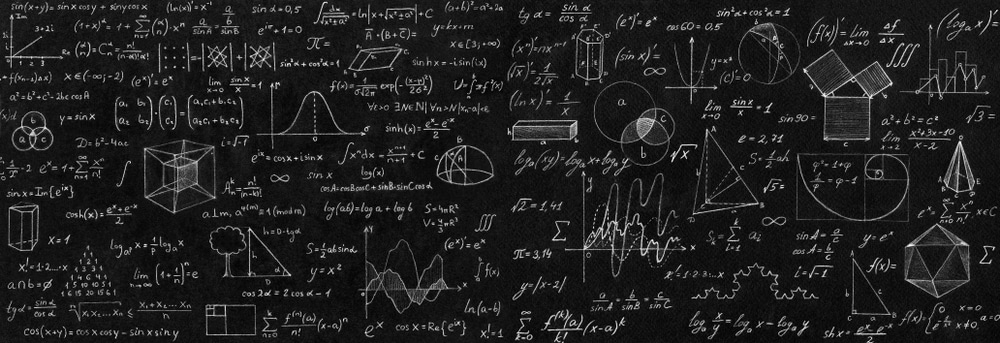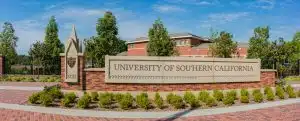Exploring the Harvard Physics Program
Harvard University is well-known not only for its academic excellence but also for its groundbreaking research and contributions to the world of physics. With a long and rich history dating back to the early 18th century, the Harvard Physics program has come a long way in establishing itself as one of the best physics research institutes in the world.
In this article, we’ll explore the history, current state, research, and future of the Harvard University Physics Department, along with the various opportunities it offers for students and researchers in the field.
The History of Physics at Harvard
When Harvard University was founded in 1636, there was no physics department. It wasn’t until 1807 when Benjamin Thompson established a ‘chemical laboratory’ at Harvard, and began to hold lectures on the topic of physics. In 1920, James B. Conant, a distinguished chemist, began expanding Harvard’s science departments, with particular emphasis on the role of physics, which led to the formation of the Harvard Physics Department, later becoming one of the top research institutions in the world.
Throughout the years, the Harvard Physics Department has been home to many notable physicists, including Nobel laureates Roy Glauber, John Mather, and Steven Weinberg. The department has also been at the forefront of groundbreaking research, such as the discovery of the first exoplanet in 1995 by Harvard astronomers.
Today, the Harvard Physics Department continues to push the boundaries of physics research, with ongoing projects in areas such as quantum computing, astrophysics, and condensed matter physics. The department also offers undergraduate and graduate programs, providing students with the opportunity to learn from world-renowned physicists and participate in cutting-edge research.
The Founding of the Harvard Physics Department
The Harvard Physics Department was officially established in 1913 after a visionary moment from Dean Conant who had a vision for creating a world-class scientific institution.
Under his leadership, the department has blossomed and produced world-renowned physicists in the likes of Nobel Laureate Steven Weinberg and astrophysicist Cecilia Payne-Gaposchkin. The department’s success can be attributed to Conant’s vision and commitment to scientific excellence, which continues to inspire today’s scientists.
Since its founding, Harvard Physics has been at the forefront of groundbreaking research in various fields of physics. In recent years, the department has made significant contributions to the study of dark matter and dark energy, as well as the development of quantum computing. The department’s faculty and students continue to push the boundaries of scientific knowledge and innovation, cementing its reputation as one of the top physics departments in the world.
Notable Harvard Physicists Throughout History
Through the years, the Harvard Physics Department has attracted some renowned physicists, who have made significant contributions to the field of physics.
These include James Chadwick, who won the Nobel Prize in Physics for discovering the neutron; Edward Purcell, who won the prize for nuclear magnetic resonance, and Julian Schwinger, who won the prize for developing a theory of quantum electrodynamics. In recent years, the department has remained a top research institution, with faculty members including John Kovac and Lisa Randall, distinguished scientists known for their cutting-edge research in cosmology and particle physics, respectively.
Another notable physicist who has contributed to the Harvard Physics Department is Roy Glauber, who won the Nobel Prize in Physics for his work on the quantum theory of optical coherence. Glauber was a professor at Harvard for over 60 years and was known for his groundbreaking research in quantum optics and statistical mechanics.
In addition to the faculty members, the department has also produced many successful alumni, including Steven Weinberg, who won the Nobel Prize in Physics for his work on the unification of electromagnetism and the weak force. Weinberg received his PhD from Harvard and went on to become a professor at the University of Texas at Austin, where he continued to make significant contributions to the field of physics.
The Current State of Physics Research at Harvard
The Harvard Physics Department is at the forefront of research in many areas of physics. With a budget of over $35 million for research, the department is home to several research centers, including the Laboratory for Integrated Science and Engineering (LISE), the Institute for Theory and Computation (ITC), the Physics Research Laboratory (PRL), and the Center for Brain Science (CBS).
The department has particular strengths in particle physics, cosmology, condensed matter physics, and atomic physics. Research is often interdisciplinary by nature, and researchers collaborate with other departments at Harvard, such as Mathematics, Computer Science, Astronomy, and others; as well as with external universities and institutions.
Harvard’s researchers have also conducted experiments in international facilities like the Large Hadron Collider and the South Pole Telescope, contributing to some of the most significant discoveries in physics today.
One of the most exciting areas of research at Harvard’s Physics Department is in the field of quantum computing. The department has a dedicated research group focused on developing and testing quantum computing hardware and software. This research has the potential to revolutionize computing by allowing for exponentially faster calculations and solving problems that are currently impossible for classical computers.
The department’s researchers are also exploring the implications of quantum computing for cryptography and information security. With the increasing interest and investment in quantum computing, Harvard’s Physics Department is well-positioned to make significant contributions to this rapidly evolving field.
The Role of Physics in Other Fields of Study at Harvard
Harvard is genuinely interdisciplinary and has several departments that not only rely on but actively integrate physics research with their work. Fields such as biology, chemistry, economics, and political science all engage with research from the Physics Department in various ways.
For example, Harvard’s Department of Earth and Planetary Sciences collaborates with the Physics Department to study the underlying physics of plate tectonics and the dynamics of Earth’s interior. The Physics Department collaborates with the Department of Genetics to study DNA and the physical properties of cells. The collaboration between the departments ultimately creates a holistic understanding of their respective fields.
Furthermore, the Physics Department at Harvard also collaborates with the Department of Architecture to study the physics of building structures. This collaboration helps architects to design buildings that are not only aesthetically pleasing but also structurally sound.
The Physics Department also collaborates with the Department of Education to develop new teaching methods that incorporate physics concepts into other subjects. These collaborations demonstrate the importance of physics in various fields of study and how it can be used to solve real-world problems.
The Impact of Harvard’s Physics Research on the World
The research conducted at Harvard’s Physics Department has had a significant impact on the world, both in terms of fundamental discoveries and practical applications. From dark matter research to developing cutting-edge sensors for medical imaging, the department has contributed to some of the most significant scientific breakthroughs of the past century.
Harvard’s work in particle physics, for example, has led to the discovery of previously unknown particles important for understanding the universe’s fundamental structure, while work in nanotechnology has led to advances in materials science and provided the groundwork for groundbreaking technologies like quantum computers and ultra-sensitive sensors.
One of the most notable contributions of Harvard’s Physics Department has been in the field of renewable energy. Researchers at the department have been working on developing new materials and technologies that can help harness renewable energy sources like solar and wind power more efficiently. Their work has led to the development of new types of solar cells that are more efficient and cost-effective, as well as new materials for wind turbines that can withstand harsh weather conditions and generate more power.
In addition to their research, the department also plays an important role in educating the next generation of physicists and scientists. The department offers a wide range of undergraduate and graduate programs, as well as opportunities for research and collaboration with faculty members. Many of the department’s graduates have gone on to make significant contributions to the field of physics and beyond, working in areas like renewable energy, healthcare, and technology.
Famous Physics Discoveries Made at Harvard University
Harvard has a long history of significant discoveries that have advanced both theoretical and applied physics. In 1952, Edwin Land invented the first polarizer in Harvard’s physics lab; the invention revolutionized the photographic industry, leading to the creation of instant cameras.
In 1974, Sheldon Glashow, John Iliopoulos, and Luciano Maiani put forward the idea of the charm quark, which would later become a central piece of the understanding of the fundamental forces of nature. Recent breakthroughs include the discovery of gravitational waves and the exploration of the electromagnetic spectrum’s high-frequency end using the South Pole Telescope.
Another notable physics discovery made at Harvard University was the development of the Harvard Cyclotron in 1948. This particle accelerator was the first of its kind in the United States and played a crucial role in advancing nuclear physics research. The Harvard Cyclotron was used to produce radioactive isotopes for medical research and treatment, as well as to study the properties of atomic nuclei. Today, the Harvard Cyclotron Laboratory continues to be a leading center for nuclear physics research.
A Day in the Life of a Harvard Physics Student
For students enrolled in the Harvard Physics Department, there are several opportunities to engage with cutting-edge research, both as undergrads and as graduate students. Undergraduates can get involved in research through close collaborations with faculty and graduate students, working in labs, participating in physics colloquiums, and attending weekly research group meetings.
Graduate students have access to all the Department’s resources, working under the supervision of world-renowned physicists and collaborating with researchers from related fields. A typical day for a Harvard Physics student could involve attending lectures or seminars, collaborating on research projects with peers, or working in one of Harvard’s numerous research facilities.
Aside from research opportunities, Harvard Physics students also have access to a wide range of extracurricular activities. The Harvard Physics Club, for example, hosts regular events such as movie nights, game nights, and guest lectures. The club also organizes trips to nearby research facilities and observatories, providing students with hands-on experience in the field.
Additionally, the Department hosts an annual Physics Fair, where students can showcase their research projects and participate in interactive demonstrations.
Harvard Physics students also have the opportunity to study abroad, with programs available in countries such as Switzerland, Germany, and Japan. These programs offer unique opportunities to study physics in different cultural contexts and to collaborate with international researchers. Students can also take advantage of Harvard’s partnerships with other universities, such as the Massachusetts Institute of Technology, to take courses and participate in research projects outside of the Physics Department.
Opportunities for Undergraduate and Graduate Students in Physics at Harvard
Harvard’s Physics Department provides various opportunities for students who have an interest or passion for physics. The research opportunities available to physics students at Harvard are numerous. Undergraduates can take courses ranging from Classical Mechanics to Quantum Computing and engage in team-based research projects.
Students can also participate in study abroad programs and internships or advanced laboratories at other universities. Graduate students have more extensive opportunities to engage in research projects, including access to the most advanced facilities and networks of researchers within the department and beyond. To support graduate-level research, many scholarships, fellowships, and teaching assistantships are available.
Additionally, the Physics Department at Harvard offers a variety of extracurricular activities for students to get involved in. There are several student-run organizations, such as the Harvard Undergraduate Physics Association, that host events and lectures throughout the year. These organizations provide opportunities for students to connect with peers who share similar interests and to learn from experts in the field.
Furthermore, the Physics Department at Harvard is committed to promoting diversity and inclusion within the field of physics. The department has several initiatives aimed at increasing the representation of underrepresented groups in physics, including women and minorities. These initiatives include mentorship programs, outreach events, and scholarships specifically for underrepresented students.
The Future of Physics Research and Education at Harvard University
The future of physics research and education at Harvard University is influenced by ongoing advancements in technology and theoretical understanding of physics. Harvard’s physics department is uniquely positioned to take on future challenges in the field and advance the forefront of knowledge.
The increased interdisciplinary work and collaborations within the department and with other fields of study at Harvard and beyond ensure a more holistic approach to understanding physics. The department’s leadership is also emphasizing the importance of continued outreach, promoting science education in the broader community, and ensuring the next generation of scientists and researchers are motivated to advance the frontiers of physics research.
One of the key areas of focus for the future of physics research and education at Harvard University is the development of quantum computing. The physics department is investing in research and education in this field, recognizing the potential for quantum computing to revolutionize the way we process information and solve complex problems.
The department is also exploring the intersection of physics and other fields, such as biology and engineering, to address pressing global challenges such as climate change and healthcare. By fostering a culture of innovation and collaboration, Harvard’s physics department is poised to make significant contributions to the future of science and technology.
Challenges and Opportunities Facing the Department Today
Like any other department, the Harvard Physics Department faces various challenges and opportunities in the contemporary academic and political context. One of the significant challenges is ensuring that the department remains at the leading edge of research and scholarship, pursuing innovative research that answers relevant questions in the field.
The department is also actively working to ensure greater equity and inclusivity, cultivating an environment where all students and researchers can thrive. Overall, the challenges remain opportunities for the department to continue to make a difference in the evolving world of physics research and education.
A Look into the Future: What’s Next for the Harvard University Physics Department
The future of the Harvard Physics Department looks promising, with much potential for groundbreaking research and continued collaboration within and outside the department.
With the department’s leadership continuing to prioritize the importance of research and education, there is much potential for the department to remain at the forefront of physics research, producing groundbreaking discoveries for the advancement of human understanding and knowledge.
As the department moves forward, the commitment to including and nurturing all voices and perspectives will continue to be a significant part of its future.
Want to learn more about getting into Harvard? You’ve come to the right place. At AdmissionSight, we have over 10 years of experience guiding students through the competitive admissions process.
AdmissionSight can help you put your best foot forward when applying to college this fall. Contact us today for more information on our services.








































